Key takeaways
- Emphasizing continuous improvement over immediate results fosters a more patient and respectful learning environment.
- Creating a fear-free classroom encourages students to view mistakes as opportunities for growth, enhancing engagement and creativity.
- Collaboration between students, teachers, and administrative staff enriches education by breaking down silos and promoting shared responsibility.
- Measuring success through meaningful progress rather than grades shifts the focus toward developing critical thinking and understanding over perfect scores.
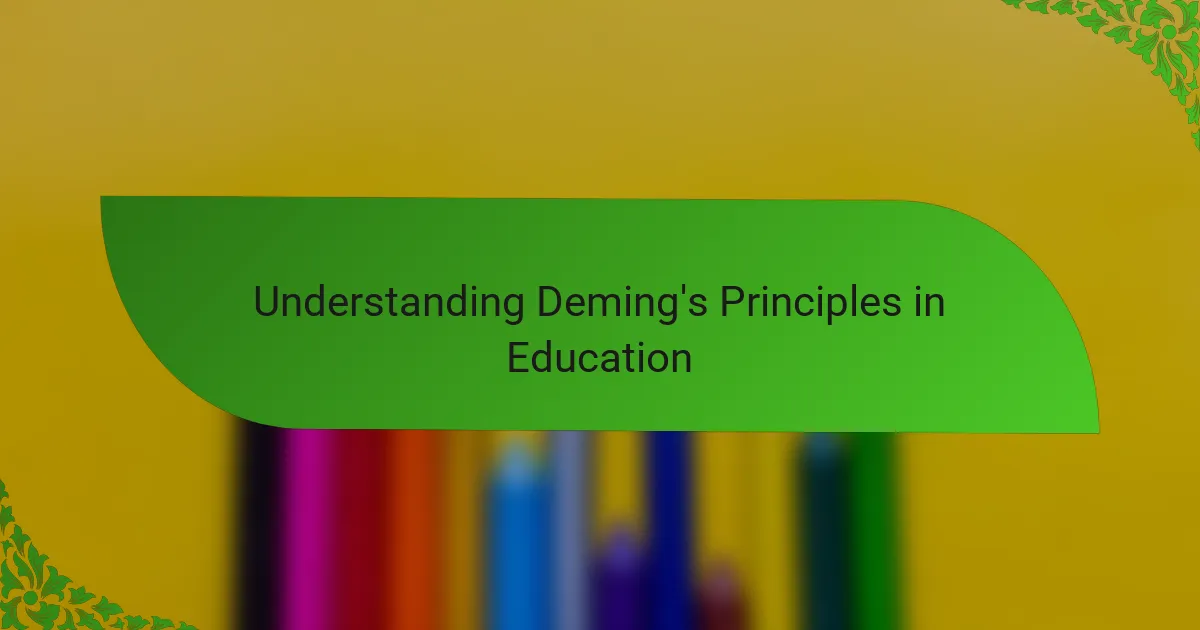
Understanding Deming’s Principles in Education
When I first encountered Deming’s principles, I was struck by how they emphasized continuous improvement rather than quick fixes—a mindset that felt refreshingly patient and respectful toward learners. Have you ever noticed how education often focuses on immediate results instead of long-term growth? This perspective made me rethink how progress should be measured.
Applying Deming’s idea that every system is interconnected, I realized that education isn’t just about students or teachers in isolation. Instead, it’s a complex network where curriculum design, administrative support, and classroom culture must work together harmoniously. This understanding shaped how I approached changes, making me more mindful of the whole ecosystem rather than isolated parts.
What resonated most deeply was Deming’s insistence on eliminating fear. Creating an environment where mistakes are treated as opportunities rather than failures transformed my own teaching experience. It made me wonder—how often do we unintentionally stifle curiosity by punishing errors? Embracing this principle brought a newfound openness and trust to the classroom that I hadn’t anticipated.
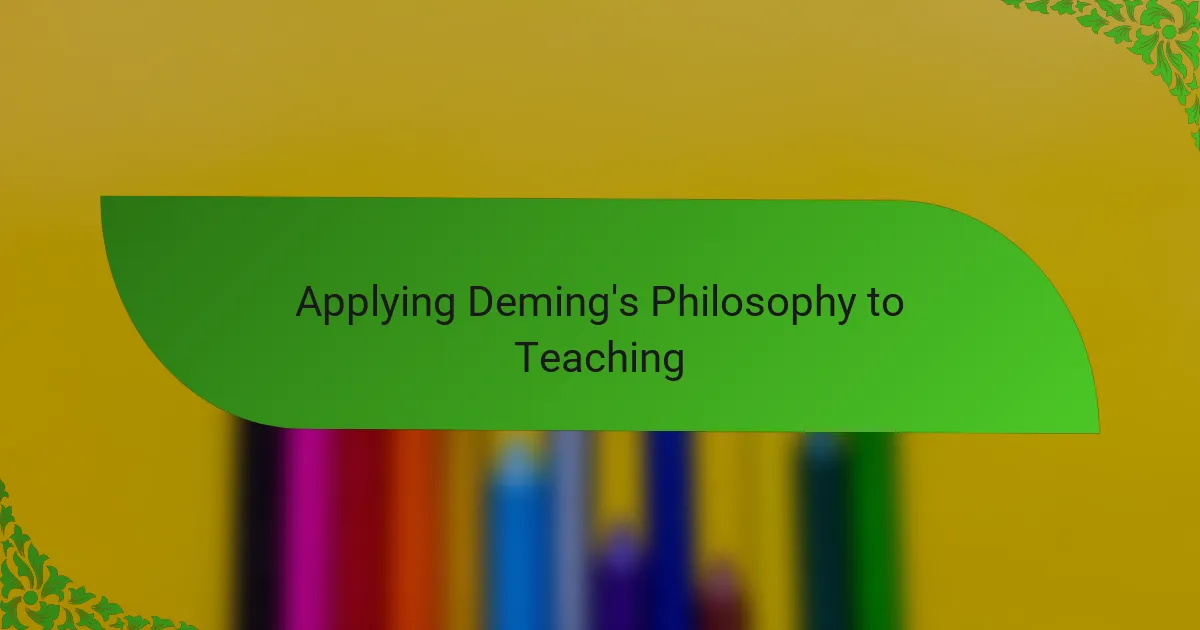
Applying Deming’s Philosophy to Teaching
Applying Deming’s philosophy meant I had to rethink how I deliver feedback in class. Instead of pointing out mistakes as failures, I started framing them as natural steps in learning, which immediately eased tension and sparked more genuine curiosity among students. Have you ever seen how a simple shift in tone can unlock a whole new level of engagement? I certainly did.
I also began to focus more on collaboration, not just between students but with colleagues and administrative staff. Recognizing that education functions as an interconnected system encouraged me to break down silos and seek input from others, which enriched my teaching methods in ways I hadn’t imagined. This approach felt more sustainable and respectful of everyone’s role in the learning journey.
Lastly, embracing continuous improvement helped me stay patient with both myself and my students. Instead of chasing perfection, I learned to appreciate small, consistent progress. It’s liberating when you stop measuring success by immediate outcomes and start valuing growth over time—doesn’t that sound like a more humane way to teach?
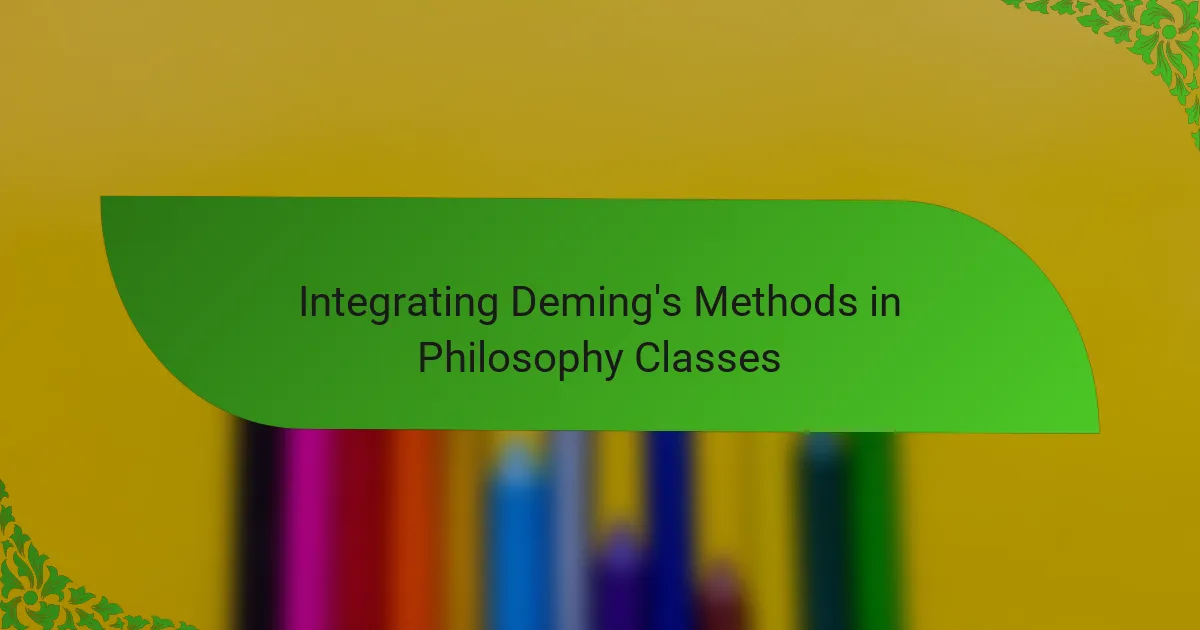
Integrating Deming’s Methods in Philosophy Classes
Integrating Deming’s methods into philosophy classes challenged me to rethink how discussions unfold. Rather than aiming to “win” debates or quickly arrive at conclusions, I encouraged students to see dialogue as an ongoing process of refinement. Have you ever noticed how rushing to the “right answer” can actually shut down curiosity? Slowing down opened the door for deeper reflection and mutual understanding.
I also experimented with using data—not just grades, but subtle feedback loops—to gauge how students engage with complex ideas over time. This continuous improvement mindset shifted my focus from one-off lectures to evolving conversations. Watching students become more comfortable wrestling with uncertainty felt like a quiet victory rooted in patience and trust.
Finally, I realized that creating a fear-free zone was essential for philosophical inquiry. When students knew their tentative thoughts wouldn’t be immediately judged, they shared more boldly and creatively. Isn’t that what philosophy is really about—exploring the unknown without fear? This shift made the classroom feel less like a testing ground and more like a laboratory for thinking.
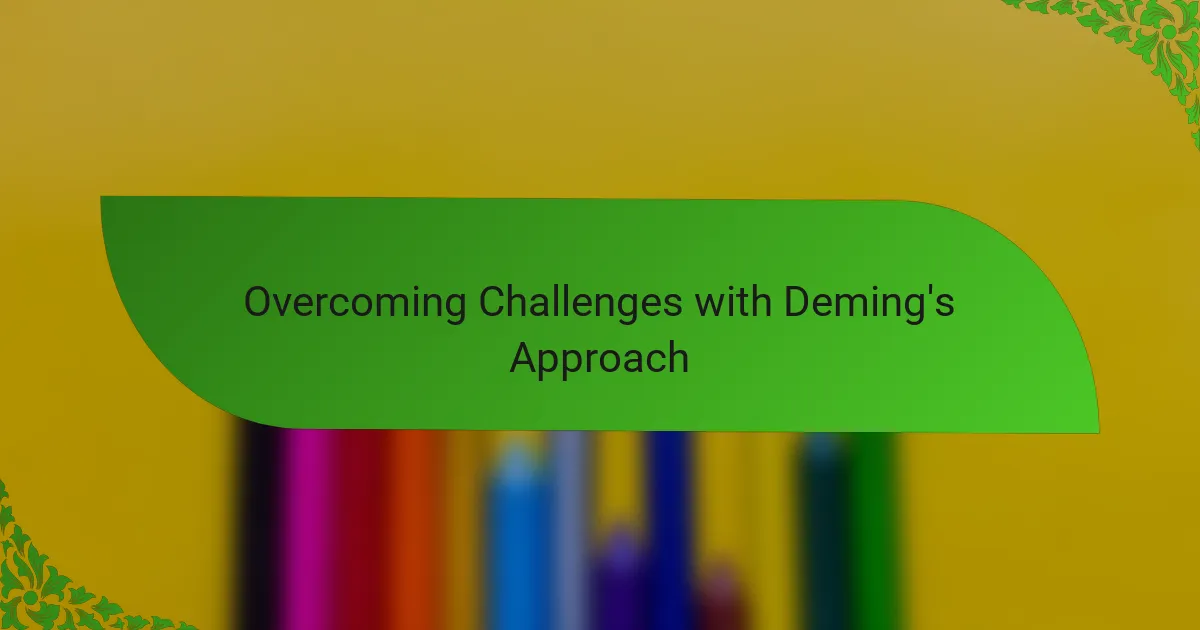
Overcoming Challenges with Deming’s Approach
Overcoming challenges with Deming’s approach wasn’t always easy. I remember a time when resistance to change felt overwhelming—I questioned if continuous improvement was just an idealistic dream. But by focusing on small, manageable adjustments, I saw shifts that gradually built momentum and eased that initial tension.
At one point, I faced pushback when introducing open discussions about mistakes, especially from colleagues used to traditional evaluation methods. Yet, staying true to Deming’s principle of eliminating fear, I kept modeling vulnerability and patience. Did that change happen overnight? Certainly not—but the trust that grew was worth every uncomfortable step.
What truly helped me overcome obstacles was embracing the interconnectedness Deming highlighted. When challenges arose, I didn’t isolate the problem but looked at how the whole educational system contributed. This perspective prevented blame games and fostered collaborative problem-solving, making even the toughest hurdles feel like shared puzzles rather than insurmountable walls.
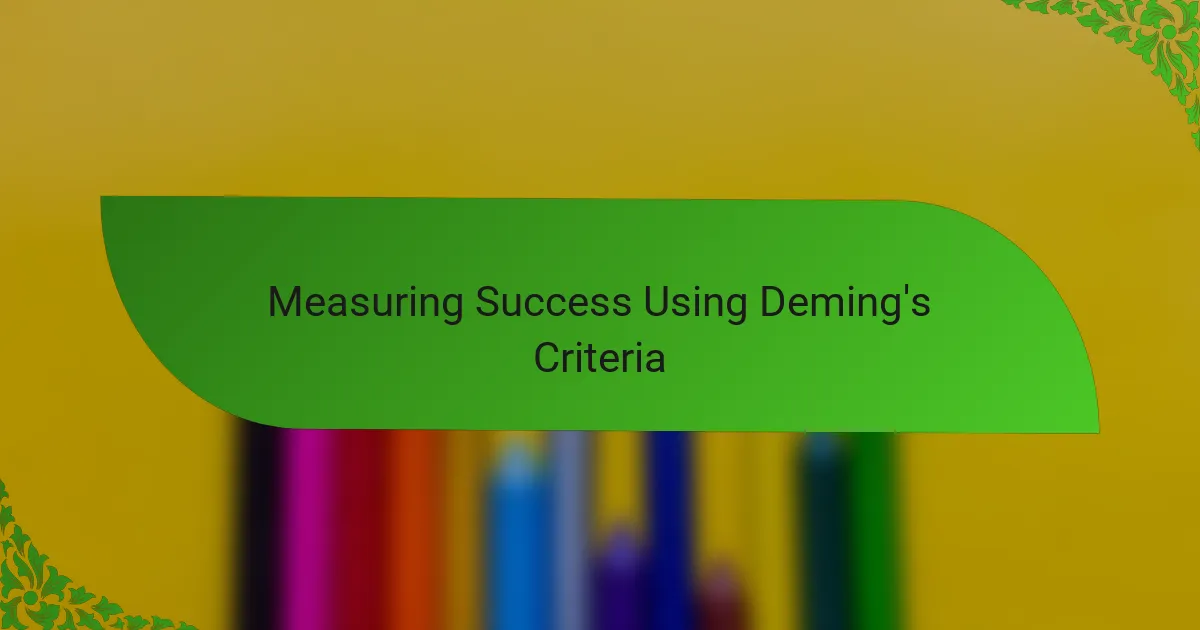
Measuring Success Using Deming’s Criteria
Measuring success through Deming’s criteria shifted my perspective from tallying scores to observing meaningful progress over time. Instead of asking, “Did my students get an A on this test?” I began to wonder, “Have they deepened their understanding and critical thinking skills?” This subtle change made success feel more like a journey than a finish line.
I also found that relying on feedback loops—small, consistent checks on how students grasp concepts—offered richer insights than traditional assessments. Have you ever noticed how a single exam can’t capture the nuances of learning? Watching those subtle improvements emerge taught me that patience and persistence truly pay off.
What surprised me most was how removing fear from evaluation transformed the classroom atmosphere. When students weren’t trapped by the anxiety of instant judgment, they took intellectual risks and explored ideas more boldly. Isn’t that the kind of success we actually want—curiosity thriving over perfection?
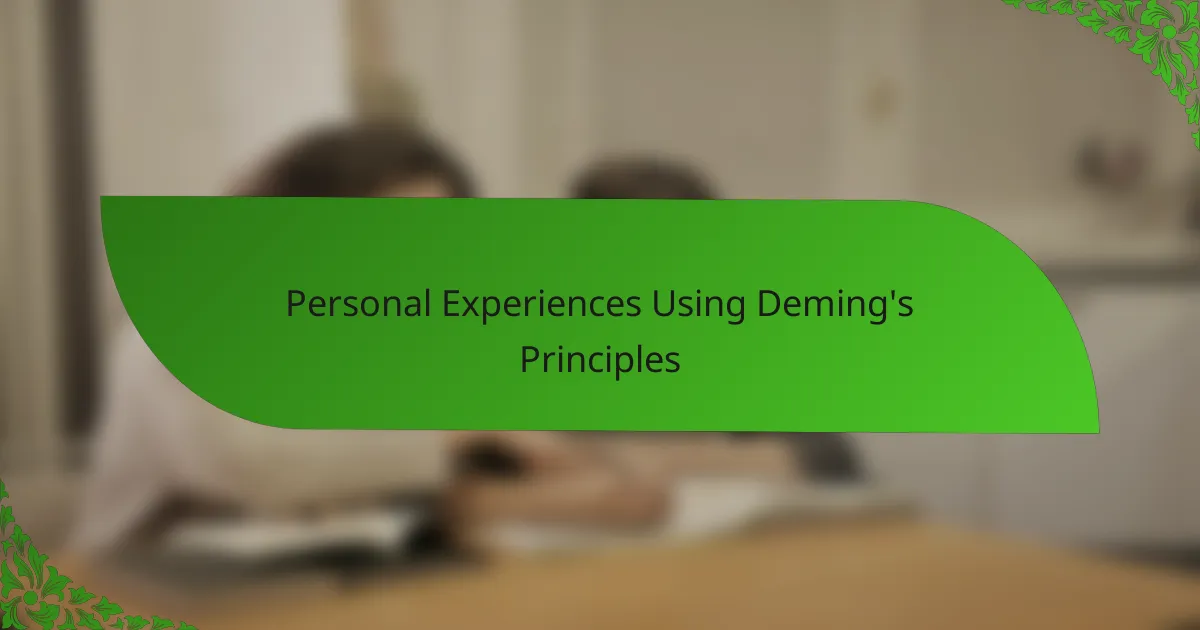
Personal Experiences Using Deming’s Principles
When I first committed to Deming’s principles, I noticed a subtle but powerful change in how I perceived setbacks. Instead of feeling frustrated by mistakes, I began to see them as essential signposts guiding improvement. Have you ever realized how freeing it feels to stop fearing errors and start welcoming them as clues?
One vivid experience stands out: during a particularly complex group project, I encouraged students to openly discuss what wasn’t working without fear of judgment. The transformation was astonishing—what began as hesitant sharing turned into a dynamic dialogue rich with insights and creative solutions. That moment convinced me that fostering trust is the cornerstone of genuine progress.
At times, I questioned whether my efforts were making a difference, especially when progress felt slow. Yet, by consistently applying feedback loops and reflecting on small shifts, I saw a gradual build-up of confidence and curiosity in my students. Doesn’t that slow, steady growth feel more meaningful than any quick fix? To me, it definitely does.
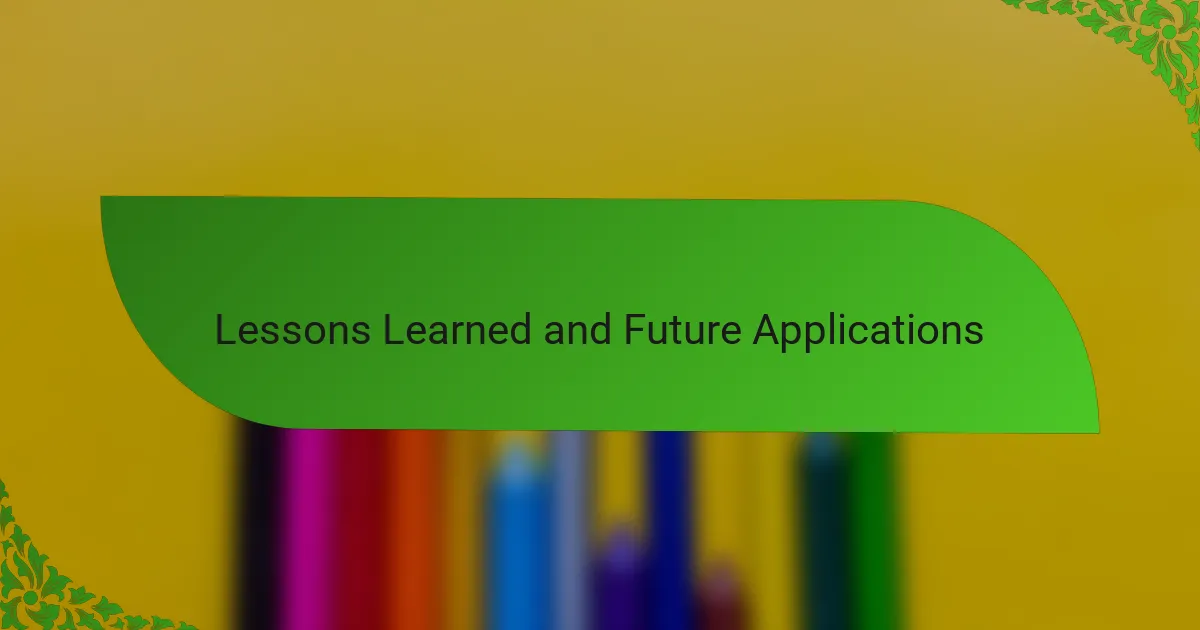
Lessons Learned and Future Applications
Reflecting on these lessons, I realize that embracing patience and trust reshaped not only my teaching but how I view learning itself. Have you ever felt that relief when progress isn’t forced but naturally unfolds over time? That sense of flow made me appreciate the value of steady, incremental growth.
Looking ahead, I’m eager to deepen this approach by fostering even stronger collaboration across all educational roles. What might happen if we treated every voice—students, teachers, administrators—as essential parts of a living system? I believe this will open doors to innovations grounded in shared responsibility and continuous feedback.
Most excitingly, I plan to embed the fear-free principle more deliberately in future courses. When students feel safe to experiment and err, they tap into creativity that standard systems rarely unlock. Isn’t that the kind of environment philosophy education truly deserves? For me, that possibility is both inspiring and motivating.